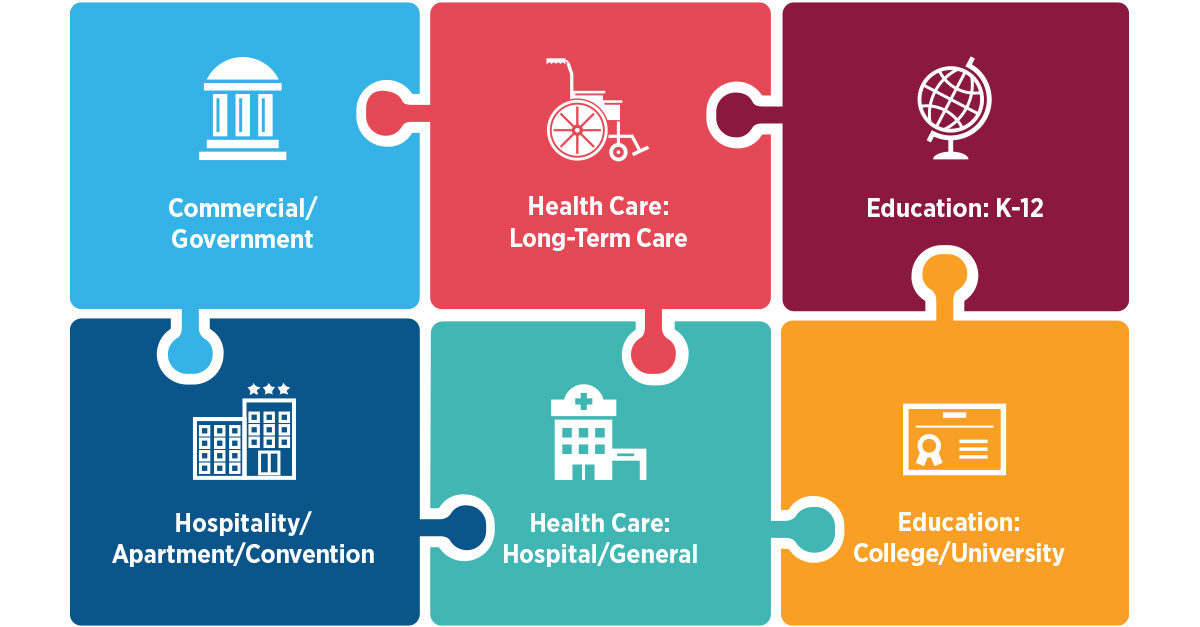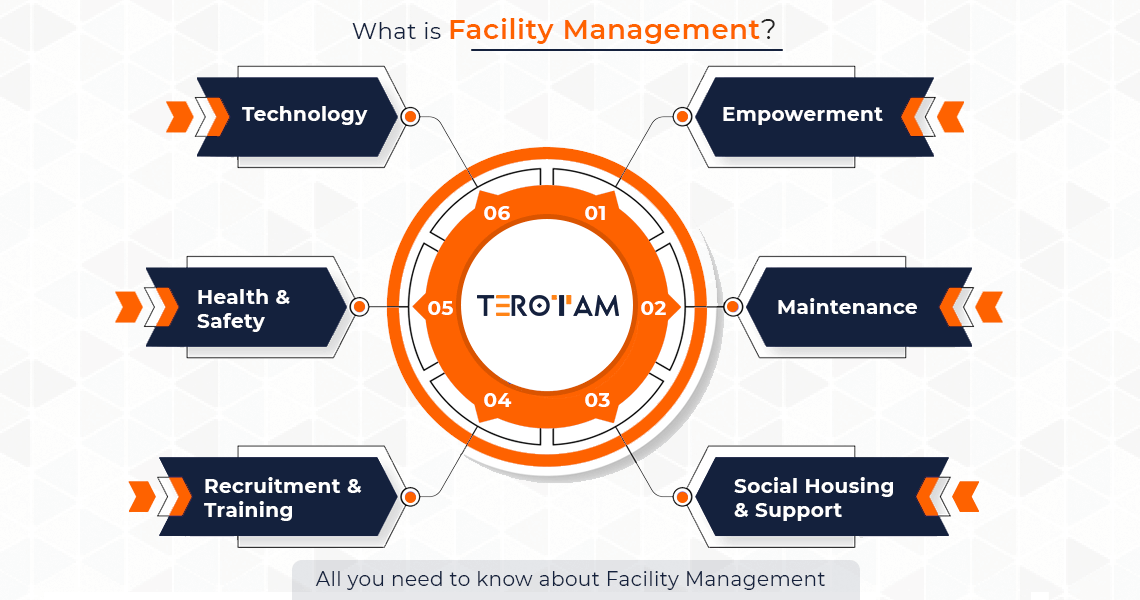Comprehensive Guide to Facility Management for Organizations
Comprehensive Guide to Facility Management for Organizations
Blog Article
The Vital Overview to Center Management: Approaches for Success
Facility monitoring plays a crucial role in the overall success of a company, functioning as the backbone that sustains safety and security, effectiveness, and performance. By employing calculated methods such as integrated technological remedies and cultivating cross-departmental collaboration, companies can dramatically enhance their operational structures. Nevertheless, the subtleties of efficient center monitoring prolong beyond mere logistics and require a thorough understanding of both measurable and qualitative metrics. As we check out these vital approaches, a closer evaluation reveals just how they can transform not simply facilities, yet the very culture within an organization itself. What might these makeovers appear like in technique?
Comprehending Facility Monitoring
What makes up effective facility administration? Effective center management incorporates the sychronisation of various organizational functions to ensure that constructed settings are secure, effective, and helpful to productivity. It incorporates the concepts of engineering, service, and architecture administration to create a seamless functional circulation within an organization.
Crucial element of facility management consist of area planning, upkeep management, and compliance with health and wellness policies. Area planning concentrates on maximizing the usage of physical sources to support business goals, while maintenance management ensures that facilities are kept in optimum problem, taking full advantage of life expectancy and minimizing operational expenses. Conformity with regulative and legal criteria is important, as it safeguards the company versus possible liabilities and improves its reputation.
Moreover, reliable facility administration relies upon the tactical use innovation, such as Building Management Equipment (BMS) and Computer-Aided Center Management (CAFM) tools. These innovations assist in real-time monitoring of building systems and enhance upkeep procedures (Facility Management). Eventually, a comprehensive method to facility management not only advertises operational effectiveness yet additionally cultivates a positive atmosphere for visitors and workers alike, driving total business success

Secret Methods for Optimization
Maximizing center administration requires a strategic method that straightens operational exercise with organizational purposes. To attain this, the initial essential technique is the execution of incorporated technological remedies. Making use of sophisticated software systems permits real-time tracking of center operations, assisting in data-driven decision-making and boosting overall efficiency.
Second of all, normal evaluations of facility performance are crucial. Carrying out regular assessments and audits enables center managers to determine areas that need renovation, guaranteeing that sources are allocated successfully. This proactive strategy aids in minimizing downtime and improving service shipment.
Another vital approach is promoting collaboration across departments. By motivating open communication in between groups, facility managers can better straighten their techniques with service goals, bring about improved operational synergy. In addition, engaging team in training programs promotes a culture of liability and boosts their capacity to add to optimization initiatives.
Enhancing Security Methods
Strengthening safety methods is crucial for developing a safe environment within facilities. A detailed safety and security procedure not just shields employees and site visitors however likewise boosts functional effectiveness. Facility Management. To achieve this, facility supervisors have to conduct normal danger evaluations to guarantee and determine possible risks that ideal procedures remain in location

In addition, clear interaction channels should be developed to report safety issues promptly. This consists of creating an easily accessible platform for staff members to voice potential dangers or events without anxiety of retribution. In addition, leveraging technology can enhance safety and security measures; for instance, implementing monitoring systems and accessibility controls assists keep track of facility tasks and restrict unapproved entry.
Last but not least, conformity with local guidelines and sector requirements is non-negotiable. Normal audits and reviews of safety and security procedures make certain placement with current legislations and ideal practices. By prioritizing these strategies, facility supervisors can cultivate a society of safety that shields all stakeholders and ultimately contributes to the organization's success.
Improving Office Setting
A favorable office setting dramatically enhances worker spirits and efficiency, making it a crucial emphasis for center monitoring. To produce such an environment, facility supervisors ought to prioritize a number of crucial elements, including functional designs, aesthetics, and staff member engagement.
Ergonomic considerations are important to decrease physical pressure and pain. This entails offering adjustable furnishings, appropriate illumination, and appropriate space for movement. These modifications can lead to decreased absence and raised job satisfaction.
Aesthetic appeals play an essential function in shaping the workplace atmosphere. Making use of shade psychology, natural lighting, and greenery can promote a inviting and stimulating setting. Attentively made areas can enhance creative thinking and enhance overall well-being.
In addition, urging employee engagement via comprehensive decision-making processes can boost the sense of ownership and belonging. Gathering feedback on office enhancements and entailing workers in the style procedure can bring about a much more customized atmosphere that satisfies their requirements.
Finally, advertising wellness initiatives, such as health cares and leisure rooms, can better contribute to a supportive office culture. By concentrating on these strategies, center supervisors can efficiently improve the workplace atmosphere, driving both staff member contentment and business success.
Measuring Success in Facilities
Measuring success in center management needs a thorough method that evaluates both quantitative and qualitative metrics. Measurable metrics typically include crucial efficiency indications (KPIs) such as space application prices, energy usage, maintenance expenses, and occupancy degrees. These metrics provide a clear image of functional effectiveness and economic efficiency, permitting center managers to recognize locations for enhancement and benchmark against industry standards.
Qualitative metrics, on the various other hand, focus on user satisfaction and worker involvement. Studies and comments devices can gauge just how well the facilities meet the needs of owners, aiding to assess the overall office environment. This facet is essential, as a completely satisfied labor force is usually connected to boosted productivity and retention rates.
To properly measure success, facility managers should likewise take into consideration integrating innovation, such as constructing monitoring systems and data analytics tools, to collect and assess pertinent data. On a regular basis reviewing both sets of metrics permits a best site much more well balanced view of performance and educates strategic decisions. Eventually, a successful center management approach official statement rests on a dedication to continual enhancement, making certain that both operational performances and individual satisfaction are prioritized.

Conclusion
To conclude, efficient center management is critical for boosting organizational performance. By carrying out integrated technological services, conducting normal evaluations, and fostering collaboration across departments, companies can accomplish optimal source allotment and functional performance. Prioritizing safety and security methods and improving work environment atmospheres better add to boosted worker fulfillment. Lastly, gauging success through both measurable and qualitative metrics permits continual enhancement, ultimately resulting in lowered functional costs and a more effective business environment.
Facility monitoring plays an important function in the total success of an organization, serving as the backbone that supports efficiency, security, and productivity.Secret elements of center management include room preparation, maintenance monitoring, and compliance with health and safety and security guidelines.Moreover, efficient facility monitoring relies on the calculated usage of innovation, such as Building Monitoring Equipment (BMS) and Computer-Aided Facility Management (CAFM) devices. Inevitably, a detailed strategy to facility administration not only promotes operational performance but additionally promotes a favorable setting for staff members and visitors alike, driving overall organizational success.
Ultimately, a successful center administration strategy pivots on a dedication to constant improvement, making certain that both operational performances and user contentment are focused click here now on.
Report this page